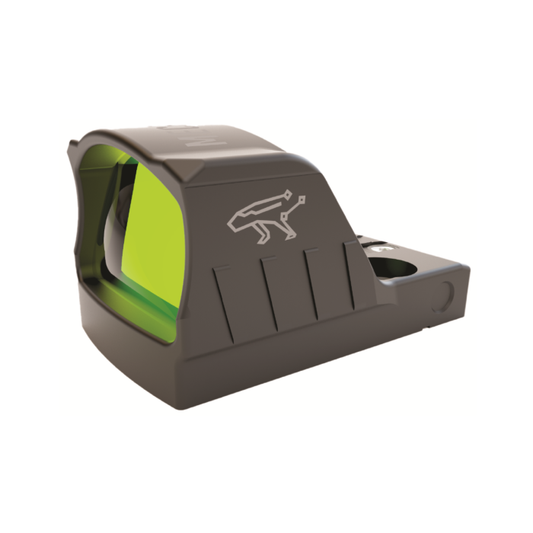

CANIK Mecanik Mo1 Mini Red Dot offers precise aiming for tactical shooting and outdoor activities. This compact red dot sight enhances target visibility, making it easier to spot your aim, even in low-light scenarios. Ideal for both novice and experienced shooters, the Mo1 delivers improved accuracy during dusk hunts or shooting ranges.
Featuring a Shield RMS footprint, this red dot sight integrates smoothly with most handguns. The durable black anodized finish not only adds a sleek look but also ensures it withstands tough conditions. With the CANIK Mecanik Mo1 Mini Red Dot, you can trust your aim and enjoy a reliable shooting experience.
Key Features:
- COMPACT DESIGN for easy mounting on handguns without added bulk.
- ENHANCED CLARITY allows you to spot targets even in low-light conditions.
- DURABLE FINISH with black anodized coating for rugged reliability.
- QUICK TARGET ACQUISITION improves shooting speed and accuracy.
- UNIVERSAL FOOTPRINT fits most firearms, providing versatile mounting options.
- LIGHTWEIGHT CONSTRUCTION ensures minimal impact on firearm handling.
- USER-FRIENDLY ADJUSTMENTS allow for easy elevation and windage settings.
- LONG BATTERY LIFE keeps you ready for any shooting scenario without interruptions.
Technical Specifications
| Specification | Details |
|---|---|
| Magnification | 1x |
| Lens Diameter | 25mm |
| Weight | 3.2 oz |
| Dimensions | 2.5 x 1.5 x 1.5 inches |
| Material | Aluminum |
What’s in the Box?
- CANIK Mecanik Mo1 Mini Red Dot
- Lens covers
- Padded case
- User manual
Customer Reviews
"The clarity is incredible! I can spot targets so easily at dusk. Highly recommend!" - John D.
"Perfect fit for my pistol. Lightweight and easy to adjust!" - Sarah P.
"Best red dot I've used for the price. Great for competitions!" - Mike R.
FAQ
How does the CANIK Mecanik Mo1 Mini Red Dot perform in low-light conditions?
The CANIK Mecanik Mo1 Mini Red Dot is designed with enhanced clarity, making it an excellent choice for low-light environments. Its quality lens allows for bright and clear target acquisition even during dusk hunting.
Is the CANIK Mecanik Mo1 Mini Red Dot compatible with my handgun?
With its Shield RMS footprint, the CANIK Mecanik Mo1 is compatible with most firearms, ensuring a seamless fit for a wide range of handguns, making it versatile for various setups.
What type of maintenance does the red dot require?
Routine cleaning of the lens and checking the mounting screws for tightness is advised. Additionally, ensure the battery is replaced regularly for optimal performance.
Similar Models
Looking for more options? Explore the complete CANIK lineup, including models like the CANIK Mete SFX for an enhanced shooting experience and the CANIK TP9 Elite SC for compact versatility. Discover our full collection for outstanding performance tailored to your shooting needs!
You May Also Like
Here’s some of our most similar products people are buying. Click to discover trending style.






